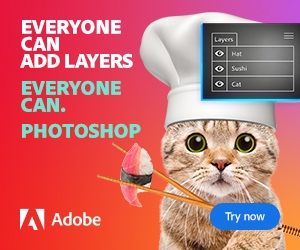In today’s digital world, video content is one of the most powerful mediums to engage audiences, evoke emotions, and convey messages. However, raw footage alone is rarely enough to create a lasting impression. That’s where video editing comes in. Through the art of storytelling, video editing takes uncut footage and transforms it into a narrative that resonates with viewers.
In this article, we’ll explore how video editing can be used to enhance storytelling. We’ll discuss key techniques that will help you craft compelling videos, along with tips on how to structure your content for maximum impact.
Why Storytelling Matters in Video Editing
Every video, whether it’s a vlog, documentary, or tutorial, tells a story. But not all stories are told effectively. The key to creating videos that capture attention lies in how the footage is edited to bring the story to life. Good storytelling isn’t just about what you show, but how you show it, and video editing plays a major role in this.
Here’s why storytelling is important in video editing:
Keeps the Audience Engaged: People are naturally drawn to stories. Editing allows you to create a narrative arc that takes your audience on a journey, making the content more engaging.
Conveys Emotion: Great video storytelling uses editing techniques to evoke specific emotions—whether it’s excitement, nostalgia, or empathy—making your video more impactful.
Enhances Understanding: A well-edited video presents information in a clear, structured way, helping the audience better understand the message you’re trying to convey.
Shapes Perception: How you edit a video can influence how viewers perceive characters, events, or ideas. The pacing, shots, and sequencing all contribute to the emotional undertone and message of your content.
Ultimately, video editing allows you to craft a cohesive narrative that resonates with viewers on a deeper level. The right editing choices can make a good story great.
Key Techniques for Storytelling Through Editing
So, how can you use video editing to tell a better story? Below are some essential techniques to help you craft compelling narratives.
1. Establishing a Strong Beginning, Middle, and End
Every good story follows a basic structure: a beginning, a middle, and an end. While this may seem basic, the way you organize your video footage in the editing process is key to ensuring the story flows smoothly.
The Beginning: This is where you hook your audience. Introduce the main idea or set the stage for what’s to come. Use your opening shot to establish the location or the mood. You may want to show a problem or conflict that sets the story in motion.
The Middle: This is the core of your story, where the plot develops. This is where you’ll reveal key information, build tension, and deepen the narrative. In editing, ensure that the pacing remains dynamic—don’t linger on a shot too long, but don’t rush through important moments either.
The End: The conclusion is where everything ties together. Whether it’s resolving a conflict or answering a question, the ending should provide closure and leave the viewer with a sense of satisfaction.
Editing gives you the power to manipulate the narrative arc, emphasizing certain moments while streamlining others for maximum effect.
2. Creating Emotional Impact Through Pacing
Pacing is one of the most powerful tools in video editing. It dictates how fast or slow the story unfolds, and it plays a direct role in how the audience feels. Fast-paced edits can generate excitement or tension, while slow pacing can evoke contemplation or sadness.
Quick Cuts: Use fast cuts or montages when you need to convey action, urgency, or excitement. Quick cuts work well in action scenes or sequences where a lot of information needs to be presented rapidly, such as in a high-energy commercial.
Slow Builds: Slower pacing allows for dramatic moments to resonate. A lingering shot or a slower cut can give the audience time to absorb important details and connect with the characters or themes of the video.
Mastering pacing is crucial to ensuring that the emotional tone of your video is aligned with the story you’re trying to tell.
3. Using Contrast for Dramatic Effect
Contrast is a key component of storytelling through editing. By juxtaposing different elements, you can create tension or highlight important contrasts in the narrative.
Juxtaposition of Scenes: Contrast different shots to create meaning. For example, you could alternate between calm, serene shots and more intense, chaotic ones to emphasize a shift in mood or tone.
Sound and Image Contrast: Pairing contrasting audio and visual elements can also enhance storytelling. Imagine using calming music during a tense scene to create a feeling of unease, or cutting to a loud, intense sound effect during a quiet moment for dramatic impact.
Contrast can bring attention to important details in your story and create a more dynamic viewing experience.
4. Utilizing Flashbacks and Nonlinear Editing
One of the most creative ways to tell a story in video is through nonlinear editing. This technique allows you to break free from chronological order and mix past and present events to reveal key pieces of the story at strategic moments.
Flashbacks: Flashbacks help reveal critical information about the past that impacts the present. In editing, you can use color grading, transitions, or even audio cues to signal a shift between time periods.
Nonlinear Sequences: Nonlinear editing can add intrigue and complexity to your story. By skipping back and forth in time, you can create suspense or slowly reveal information, keeping your audience engaged and eager to piece the puzzle together.
Flashbacks and nonlinear structures are great tools for stories that rely on mystery or surprise.
5. Using Sound to Tell the Story
Audio is often considered the “unsung hero” of video storytelling. While visuals may dominate, sound plays a huge role in shaping the emotional tone of a video.
Dialogue and Voiceovers: Dialogue carries a significant portion of the narrative, but how it’s edited can affect its impact. You can use pauses or overlapping voices to create tension, or adjust the volume and timing of voiceovers to deliver the emotional weight of the scene.
Sound Design and Music: Background music and sound effects can dramatically change the mood of a scene. Use sound effects to highlight key moments or actions, and choose a music track that enhances the emotional atmosphere of the video.
Effective sound design complements your visual storytelling and strengthens the viewer’s emotional connection to the content.
Tools for Storytelling in Video Editing
To implement these storytelling techniques, you’ll need the right video editing tools. Here are some of the best options:
Adobe Premiere Pro: This professional video editing software is highly versatile and packed with features that make storytelling easy. Its tools for cutting, pacing, sound editing, and color grading give you everything you need to craft a compelling narrative.
Final Cut Pro: Known for its user-friendly interface, Final Cut Pro is a favorite among creators working on Mac. It offers powerful editing tools for creating seamless storylines and cinematic visuals.
DaVinci Resolve: Ideal for color grading and sound editing, DaVinci Resolve is a go-to tool for creating emotionally charged videos. Its advanced features help you manipulate both visuals and audio to enhance storytelling.
iMovie: For beginners, iMovie provides simple editing features that are great for telling straightforward stories. Its drag-and-drop interface makes it easy to cut and sequence clips quickly.
With the right tools, you can bring your vision to life and tell your story in the most compelling way possible.
Conclusion
Video editing is far more than just a technical skill—it’s an essential part of the storytelling process. By mastering techniques like pacing, contrast, nonlinear editing, and sound design, you can transform ordinary footage into a narrative that captivates your audience and evokes powerful emotions. Remember, storytelling in video editing isn’t just about showing what happens—it’s about how you show it, and the choices you make in the editing room can determine the overall impact of your video.
Whether you’re creating content for social media, filmmaking, or business presentations, the art of storytelling through editing can set your videos apart and help you create memorable, impactful experiences for your viewers.


